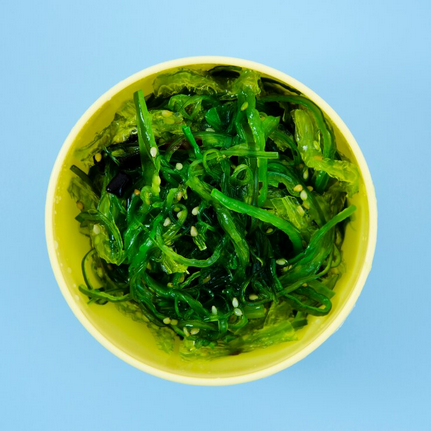Introduction:
The world's oceans are home to a vast array of marine life, and many of these species have found their way onto our plates as a vital source of sustenance. One such marine plant that has gained popularity in recent years is Atlantic Wakame. This remarkable seaweed not only offers a unique taste and texture but also boasts an impressive nutritional profile. In this article, we will explore the journey of Atlantic Wakame, from its origins in the ocean depths to its transformation into a delectable culinary delight.
Origins and Growth:
Atlantic Wakame, scientifically known as Undaria pinnatifida, is a type of brown seaweed that is native to the waters of Japan and Korea. It thrives in the temperate regions of the North Atlantic Ocean, where it attaches itself to rocky substrates using a holdfast. The seaweed has a long, strap-like frond that can grow up to several meters in length. Its growth is facilitated by the rich nutrients present in the ocean, including nitrogen, phosphorus, and other essential minerals.
Harvesting and Processing:
The harvesting of Atlantic Wakame is a meticulous process that requires skilled individuals. Typically, the seaweed is hand-harvested by divers equipped with special tools to cut the fronds close to the holdfast. This method ensures that the seaweed can regrow and sustain its population. Once harvested, the wakame is carefully washed to remove any impurities and then dried to reduce its moisture content. The dried seaweed is then packaged and transported to processing facilities.
Nutritional Benefits:
Atlantic Wakame is not only delicious but also highly nutritious. It is a rich source of vitamins, minerals, and antioxidants. The seaweed is known for its high iodine content, which is essential for thyroid health and proper metabolism. It also contains significant amounts of calcium, magnesium, iron, and vitamins A and C. Additionally, Atlantic Wakame is low in calories and fat, making it an excellent choice for those seeking a healthy and balanced diet.
Culinary Uses:
Atlantic Wakame has been a staple in Asian cuisines for centuries, particularly in Japanese and Korean cooking. It is commonly used in soups, salads, stir-fries, and sushi rolls. The seaweed has a delicate, slightly sweet flavor with a hint of brininess, which adds depth to various dishes. Its unique texture, when rehydrated, is both tender and slightly crunchy, providing a pleasant mouthfeel. Atlantic Wakame's versatility allows it to be incorporated into a wide range of recipes, enhancing both taste and visual appeal.
Health Benefits:
The consumption of Atlantic Wakame offers several health benefits. Its high iodine content supports thyroid function and helps regulate metabolism. The seaweed's rich antioxidant profile helps combat oxidative stress and reduce the risk of chronic diseases. The presence of fucoidan, a unique compound found in brown seaweeds, is believed to have anti-inflammatory and immune-boosting properties. Furthermore, Atlantic Wakame is a good source of dietary fiber, which aids digestion and promotes a healthy gut.
Sustainability and Environmental Impact:
As Atlantic Wakame gains popularity worldwide, concerns about its sustainability and environmental impact have emerged. It is crucial to ensure that harvesting practices are conducted in a manner that preserves the seaweed's natural habitat and allows for its regeneration. Sustainable farming methods, such as seaweed aquaculture, can help meet the increasing demand for Atlantic Wakame without depleting wild populations. Additionally, the cultivation of seaweed can contribute to carbon sequestration and mitigate the effects of climate change.
Conclusion:
Atlantic Wakame's journey from the ocean depths to our plates is a fascinating one. This versatile seaweed offers a unique taste, texture, and a plethora of health benefits. The careful harvesting and processing methods ensure that the seaweed maintains its nutritional value and ecological sustainability. As more people embrace the culinary delights of Atlantic Wakame, it is essential to prioritize sustainable practices to protect the marine ecosystems that support its growth. By appreciating and responsibly utilizing this ocean treasure, we can continue to enjoy its flavors while preserving the delicate balance of our marine environments.





Comments